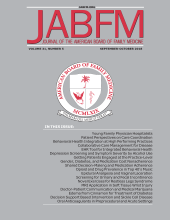Abstract
Introduction: The Electronic Communications and Home Blood Pressure Monitoring trial (e-BP) demonstrated that team care incorporating a pharmacist to manage hypertension using secure E-mail with patients resulted in almost twice the rate of blood pressure (BP) control compared with usual care. To translate e-BP into community practices, we sought to identify contextual barriers and facilitators to implementation.
Methods: Interviews were conducted with medical providers, staff, pharmacists, and patients associated with community-based primary care clinics whose physician leaders had expressed interest in implementing e-BP. Transcripts were analyzed using qualitative template analysis, incorporating codes derived from the Consolidated Framework for Implementation Research (CFIR).
Results: Barriers included incorporating an unfamiliar pharmacist into the health care team, lack of information technology resources, and provider resistance to using a single BP management protocol. Facilitators included the intervention's perceived potential to improve quality of care, empower patients, and save staff time. Sustainability of the intervention emerged as an overarching theme.
Conclusion: A qualitative approach to planning for translation is recommended to gain an understanding of contexts and to collaborate to adapt interventions through iterative, bidirectional information gathering. Interviewees affirmed that web pharmacist care offers small primary care practices a means to expand their workforce and provide patient-centered care. Reproducing e-BP in these practices will be challenging, but our interviewees expressed eagerness to try and were optimistic that a tailored intervention could succeed.







